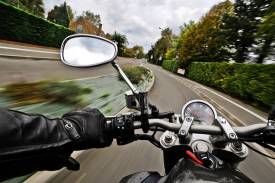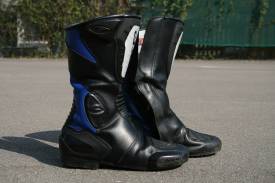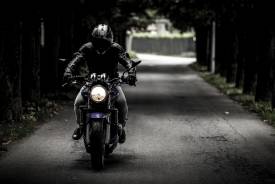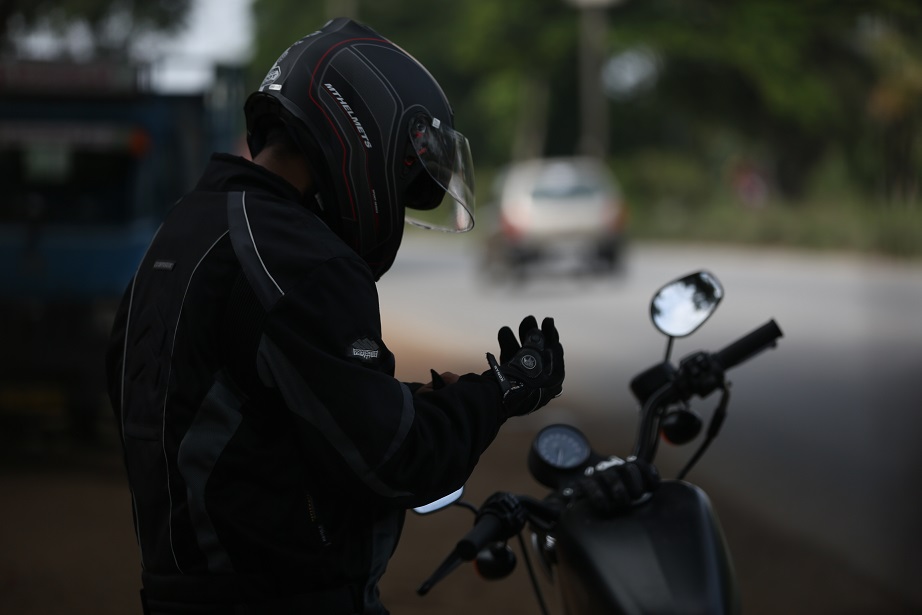If you’re a new motorcyclist, you’ll want to get geared up as soon as possible. Whilst some equipment is optional, other pieces of kit are mandatory. In most cases, it’s best to have the full set of gear so that you stay safe and comfortable on the roads. Here’s a brief guide to all the gear you may need.
Helmet
Having a decent lid is essential. Helmets sold in the UK generally must meet certain safety requirements set by the government, known as the SHARP safety rating. Reading up on this is recommended, especially if you’re buying second hand (most sellers will abide by legal standards, but there’ll always be that one dodgy seller).
There are all kinds of criteria to look for when buying a helmet. When it comes to safety, having a brightly coloured helmet can help you become more visible to traffic. You should also make sure the visor isn’t too tinted or scratched, and that you can see clearly out of it.
Your helmet needs to be comfortable. When buying ensure that it fits snugly, but that there’s not too much movement (otherwise it won’t protect you during a crash). For second hand, helmets you should always check the inside for wear and tear. The lining can usually start to disintegrate after four years, making it itchy and uncomfortable. Also check that the strap is working correctly and that it can fasten tightly enough beneath your chin. You can check out this site to find more info on buying a motorbike helmet.
Always try on a helmet and walk around with it for a couple minutes to give you a good feel of the comfort. Generally, more expensive helmets will be more comfortable – but not any safer. If keeping your head protected is a primary concern, a low-end model is sure to provide just as much safety as a high-end one.

Gloves
Keeping your hands warm involves a decent pair of gloves. Keeping your hands protected is even more important. The first instinct when falling off a bike, is to put ones hand out. Hands and fingers are very fragile, so get a good pair of gloves to prevent any serious injury.
Gloves should extend over the end of sleeves so that not bare skin is on show, otherwise rain will get up your sleeves. Make sure that the straps do up tightly. Gloves with poor-quality straps could fly off during a crash, serving you no protection.
You should also ensure the stitching quality is good, especially around the palms. Little bits of wear and tear could develop into rips that will leave your skin exposed. Armoured gloves are generally handy for offering extra protection on the palms and knuckles. Of course, too much armour may hinder your ability to form a grip, so take this into account.

Boots
The most common injuries for bikers are ankle injuries, which is why having decent boots is a must. A good pair of boots will offer firm ankle support and be waterproof. Whilst there’s no law against wearing ordinary boots, specialist boots are recommended.
One important factor to look out for is the quality of the soles. Your feet will constantly be making contact with the tarmac, so it’s important that they’re thick. On top of this, thick soles can help absorb the vibrations of the bike. You should check for ridges as this will provide grip. Ridges should be at least 4mm thick.
Like all biking gear, boots should fit snugly. Ideally you want to look for a happy medium between being tight enough to allow gear control, but loose enough that your foot isn’t going numb. Check for good quality zipping or lacing. When testing boots out, try having a walk around in them in socks you’d usually wear, as well seeing how comfortable they are when in your natural riding position. This will prevent you buying a pair of boots that gives you blisters and sores.
Some people will also protect the tops of their feet. This is useful if your bike falls on top of you, although steel caps aren’t always a good solution, as they can cut into the toes when flexing your foot. As with other gear, feel free to go bright and colourful – this will make you more visible to drivers.

Jacket and Trousers
It’s tempting to try and dress for fashion when on a bike, but safety and comfort should really come first. Leather clothing has stood the test of time, providing comfort and protection against abrasion. However, there are many other materials to look out for such as Cordura and Gore-tex that are great against the rain (leather can get horribly uncomfortable when wet, especially if you’re wearing a whole body suit).
It’s good to give clothing a full look over before buying – especially when it comes to second hand clothing. Cheap or worn seams could rip over time, simply from flexing or the vibrations of the bike. Flaps on the pockets and Velcro on the sleeves can also protect against the rain.
All clothing – especially body suits – should fit enough that it isn’t baggy or too tight. Ensure that you have enough movement so that you can react fast. This applies mainly to shoulders, for moving your arms and turning your head and body to look around.
Some protective clothing will come with armour, which can be worthwhile. Whilst you don’t need to be completely plated in it, having it on vulnerable places such as elbows, knees and hips can be good for shielding you against a crash. Even a short skid at 30 mph could be enough to shred through these areas and wear them down to the bone. Other alternatives to armour include thick padding and Kevlar weave. If you’re going to wear jeans, a combination weave of denim and Kevlar is recommended.


